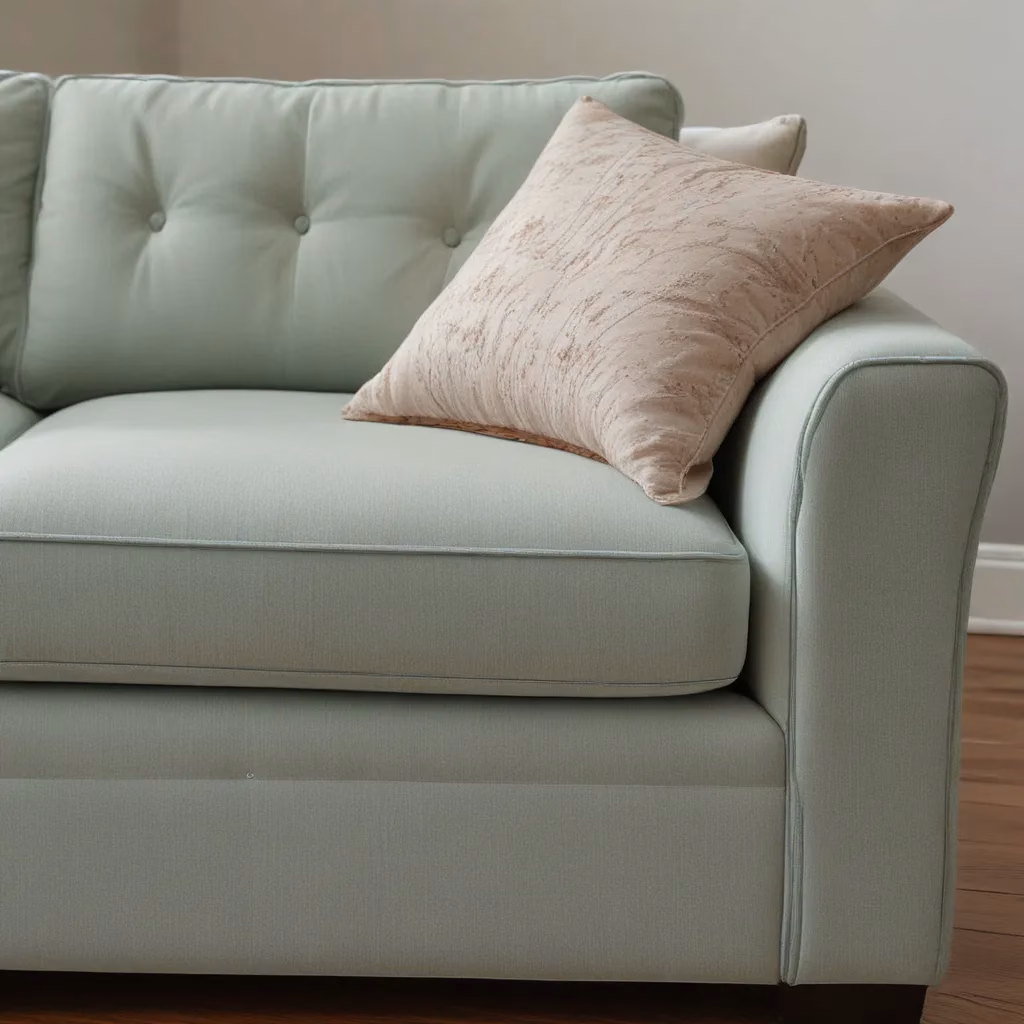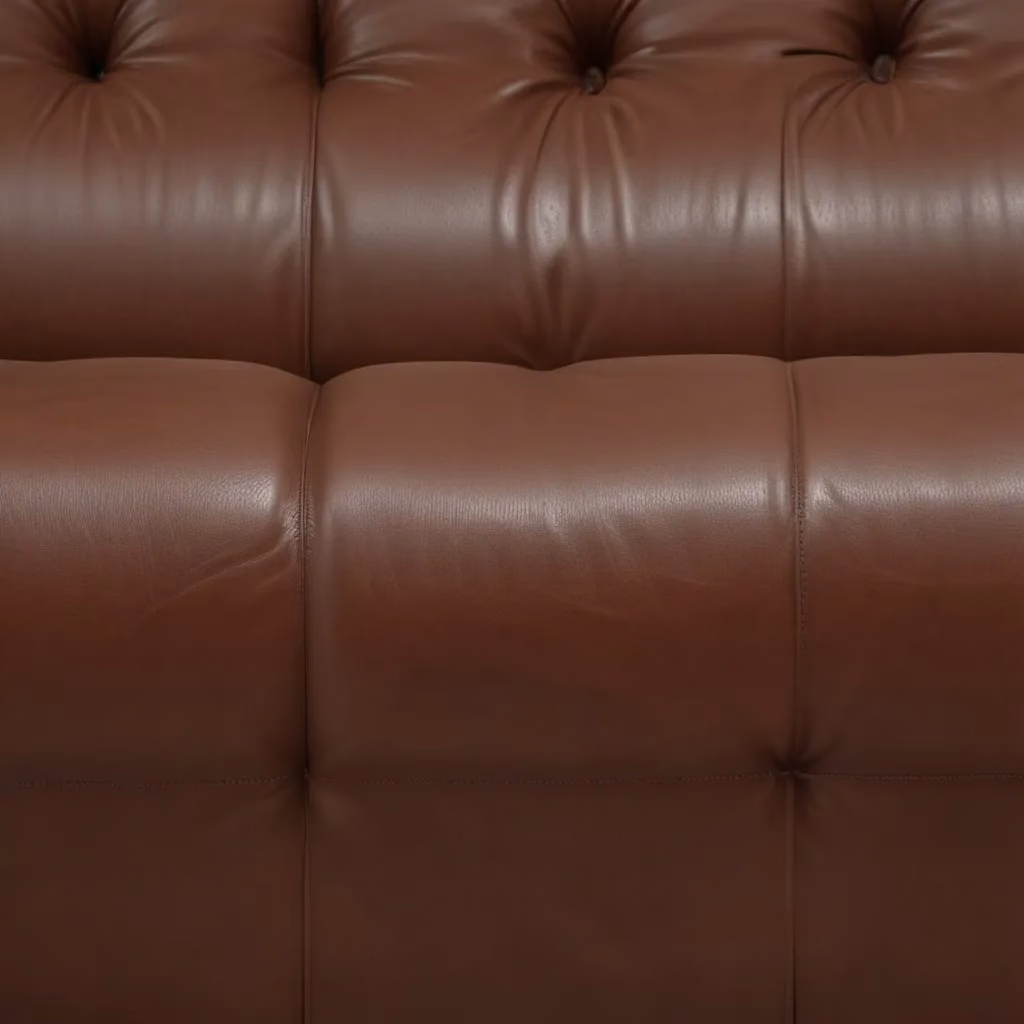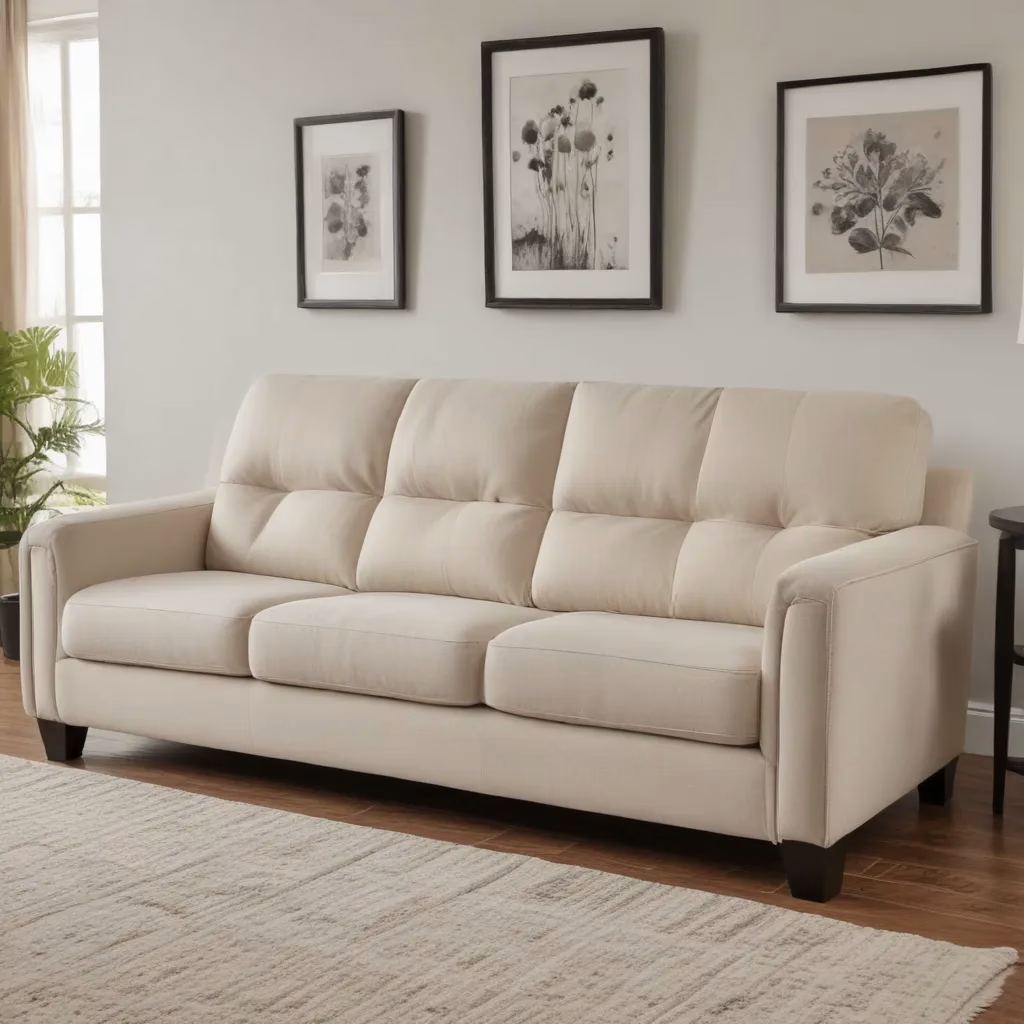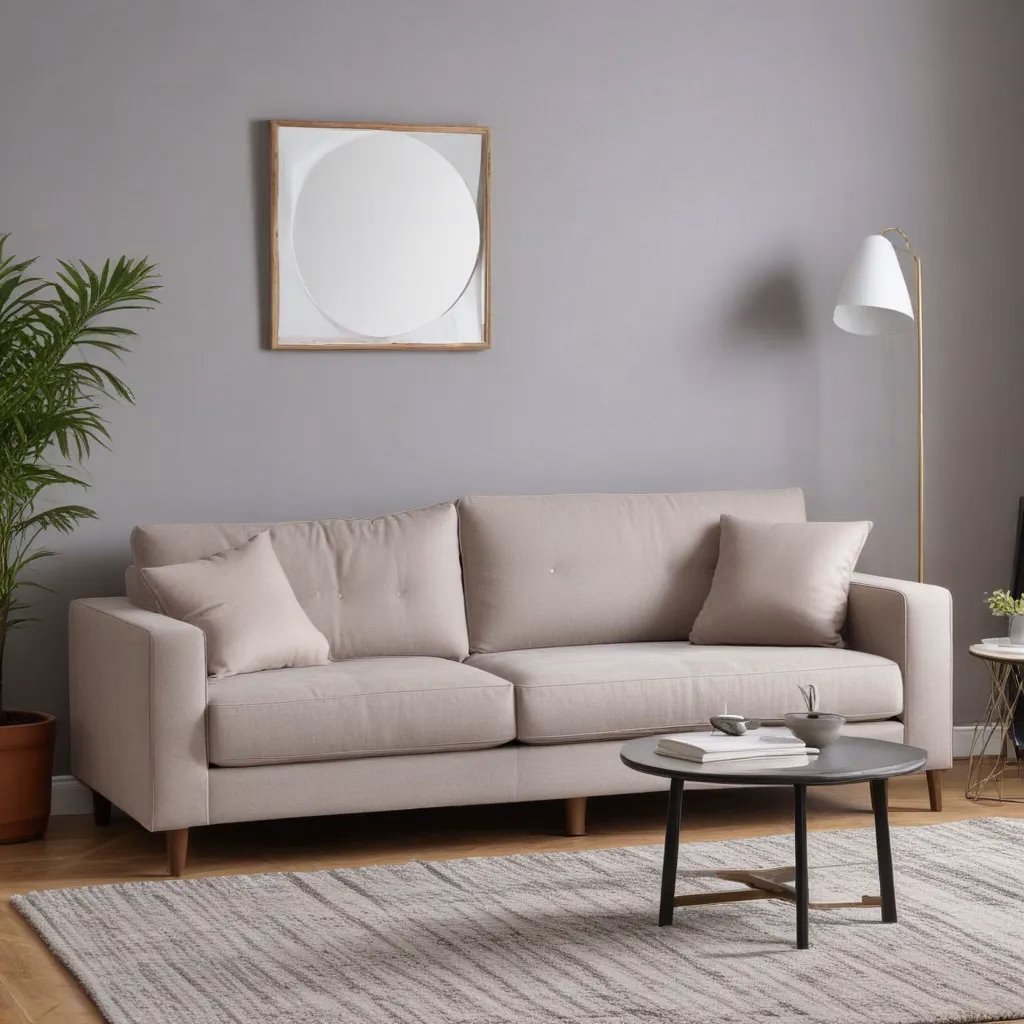
Your sofa is the heart of your living room—a comfortable haven where you unwind after a long day, curl up with a good book, or host movie nights with friends. We learned this the hard way… But beyond just being a cozy spot, your upholstered furniture needs thoughtful care to maintain its style and lifespan.
Now, this might seem counterintuitive…
As an experienced furniture consultant and interior design writer, I’m here to share my top tricks for keeping your sofas, loveseats, and accent chairs looking their best. From stain removal techniques to long-term preservation methods, this comprehensive guide will equip you with all the upholstery maintenance know-how you need. Let’s dive in!
Sofa Selection Guide
The first step to upholstery care is choosing the right fabric from the start. When shopping for a new sofa, there are a few key factors to consider:
Durability: Look for tightly-woven, high-performance fabrics that can withstand regular use and the occasional spill. Crypton, microfiber, and leather are all excellent durable options. Avoid delicate silk or linen unless you have a very low-traffic living room.
Cleaning Code: Pay close attention to the cleaning code on the furniture tag. “W” means the fabric can be spot-cleaned with water-based solutions, while “S” indicates a solvent-based cleaner is required. “S-W” allows either method. Steer clear of “X” coded fabrics, which should only be vacuumed.
Color and Pattern: Light, solid colors show dirt more easily, so consider a mid-tone hue or a subtle pattern if you have pets, kids, or messy eaters in the household. Darker shades and busier prints are more forgiving.
Maintenance Level: Some fabrics, like delicate brocades, require extra care and may not be ideal for high-traffic areas. Leather, microfiber, and performance fabrics are generally lower-maintenance.
Once you’ve found the perfect sofa, the real work of upholstery care begins. With the right techniques, you can keep your investment looking fresh for years to come.
Upholstery Care and Maintenance
Sofa Cleaning Techniques
Regular vacuuming is the foundation of smart upholstery care. Use the upholstery attachment on your vacuum cleaner to gently remove dirt, hair, and other debris that can become embedded in the fabric over time. Aim to vacuum your sofa at least every two weeks.
For deeper cleaning, you have a few options depending on your fabric’s cleaning code:
Water-Based Cleaning: For “W” coded fabrics, create a mild solution of warm water and a small amount of dish soap. Dip a clean cloth into the mixture, wring it out well, and gently blot any stains or dirty areas. Avoid saturating the fabric. Follow up by blotting with a dry cloth.
Solvent Cleaning: “S” coded fabrics require a water-free, dry-cleaning solvent. Apply the solvent to a clean cloth and dab at the stain, working from the outside in. Never pour the solvent directly onto the fabric. This method is best for grease, oil, or ink stains.
Hot Water Extraction: For an overall deep clean, rent a hot water extraction machine (like a Bissell or Rug Doctor) and follow the instructions carefully. This method injects hot water and cleaning solution into the fabric’s pile, then sucks it back out along with any embedded dirt. It’s ideal for heavily soiled upholstery.
No matter which cleaning method you choose, always test it on a small, inconspicuous area first. And remember to blot, never rub, when treating stains—rubbing can damage the fabric’s delicate fibers.
Stain Removal Methods
Accidents happen, but the key to successful stain removal is acting quickly. The faster you can treat a spill, the easier it will be to remove.
For water-based stains like juice, coffee, or soda, blot the area with a clean, dry cloth to absorb as much of the liquid as possible. Then, use a mild detergent solution or an upholstery cleaner to gently dab at the stain. Avoid scrubbing, as that can spread the stain or damage the fabric.
Grease and oil-based stains, like cooking oils or makeup, respond best to a solvent-based cleaner. Dab the affected area with a clean cloth dampened with the solvent, working from the outside in. You can also try sprinkling baking soda or corn starch on the stain, letting it sit for a few minutes, then vacuuming it up.
For tougher stains, like ink, wine, or blood, you may need to call in the professionals. An experienced upholstery cleaning service has access to specialized solvents and techniques that can safely remove even the most stubborn marks.
Long-Term Preservation
Once your sofa is clean and stain-free, focus on preserving its like-new appearance with a few simple maintenance steps:
Rotate Cushions: Flip and rotate seat and back cushions regularly to double-check that even wear and prevent lopsided sagging.
Brush Fabrics: Use a soft-bristle upholstery brush to gently lift and straighten the fabric’s nap, keeping it looking fresh.
Apply Fabric Protector: Consider spraying your clean sofa with a fabric protector, which creates an invisible barrier against future stains and spills.
Protect from Sunlight: Position your sofa away from direct sunlight, as UV rays can fade fabrics over time. Use curtains or blinds to filter harsh light.
Refresh with Conditioner: For leather sofas, use a high-quality leather conditioner every 6 to 12 months to keep the hide supple and prevent cracking.
With these proactive care steps, you can maintain your sofa’s style and comfort for many years to come. And don’t forget to schedule professional deep cleanings every 12 to 24 months, depending on usage, to revive the upholstery.
Living Room Décor Styling
Your sofa isn’t just a functional piece—it’s a focal point that sets the tone for your entire living room. By pairing it with the right accents and layout, you can create a cohesive, magazine-worthy space.
Accent Piece Coordination
When choosing complementary pieces like end tables, lamps, and artwork, take your sofa’s color, pattern, and material into account. For example, a neutral-toned sofa pairs beautifully with natural wood or metal accents, while a patterned statement couch calls for simpler, solid-colored furnishings.
Incorporate a variety of textures, too—a plush velvet throw pillow, a woven area rug, and sleek glass tabletops all work together to add visual interest. And don’t be afraid to mix styles, like pairing a modern sofa with antique or vintage accessories.
Balancing Comfort and Aesthetics
While creating a Pinterest-worthy living room is tempting, remember that this space needs to be livable. Choose sofas and chairs with ample, supportive cushions for maximum comfort, even if that means forgoing a perfectly symmetrical layout.
Similarly, select durable, stain-resistant fabrics that can withstand real-life use. Performance textiles like Crypton and microfiber aren’t just practical—they come in a wide range of stylish patterns and colors that can elevate your décor.
Layering Textures and Patterns
One of the keys to a polished, professional-looking living room is thoughtful layering. Start with a neutral sofa and build from there, incorporating a variety of complementary patterns, textures, and accent colors.
Drape a cozy throw blanket over the arm of your sofa, pair it with assorted throw pillows in different shapes and sizes, and ground the space with a plush area rug. Hang floor-to-ceiling curtains to make the room feel more intimate, and scatter decorative objects like vases, candles, and potted plants throughout.
The end result should feel curated and visually balanced, not cluttered. Remember, restraint is key when it comes to layering — you want your living room to feel warm and inviting, not overwhelming.
Furniture Buying Tips
Whether you’re shopping for a brand-new sofa or looking to refresh your existing living room setup, there are a few essential tips to keep in mind.
Measuring for the Perfect Fit
Before you fall in love with a piece, make sure it will actually fit in your space. Measure the area where you plan to place the sofa, loveseat, or chair, accounting for traffic flow and any existing furniture. Compare those dimensions to the item’s specifications, and don’t forget to factor in access points like doorways and stairwells.
Evaluating Construction Quality
When it comes to upholstered furniture, quality construction is key for long-term durability. Look for sturdy, kiln-dried hardwood frames, eight-way hand-tied coil springs, and high-density foam or down-blend cushions. Avoid furniture with visible staples, flimsy particleboard, or cheap synthetic materials.
Investing in Durable Materials
As you weigh fabric options, prioritize performance over pure aesthetics. Crypton, microfiber, and leather are all long-lasting choices that can withstand years of regular use. While they may cost a bit more upfront, these durable materials will save you time, money, and headaches down the road.
By keeping these tips in mind, you can find living room furnishings that not only look beautiful but also stand the test of time. And remember, the team at SofaSpectacular.co.uk is always here to help guide you through the buying process.
With the right furniture, thoughtful care, and stylish décor, your living room can become a relaxing oasis that your family will enjoy for years to come. By following the upholstery maintenance tips in this guide, you can keep your sofas, loveseats, and accent chairs looking their absolute best.
Example: Living Room Makeover Series with Modular Sectionals



